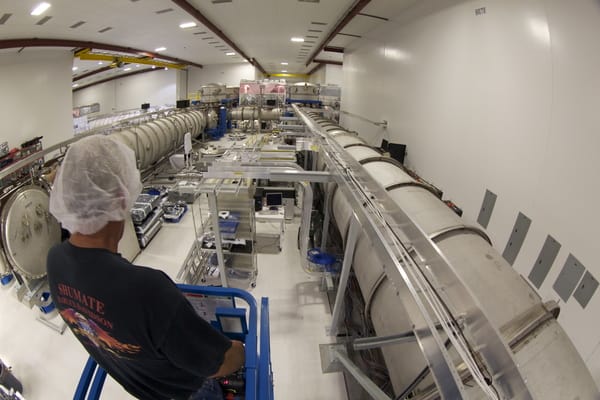
By Matin Durrani in Baltimore, Maryland, US
The exhibition hall at this year’s APS March meeting is so big that it can be hard to know who or what to see among the many companies displaying their wares or services. Fortunately, my colleague Joe Breck from IOP Publishing’s office in Philadelphia tipped me off about a great little story featuring Kepco Power Supplies, which is based in Flushing, New York.
I spoke to Mark Kupferberg, executive vice-president for power solutions at the firm, which was founded by his father and his two brothers in 1946 shortly afer the three had finished work on the Manhattan atomic-bomb project. Kepco mainly makes power supplies that convert mains AC into DC electricity, and has recently played a small but vital role in the discovery of gravitational waves, which were first predicted by Einstein 100 years ago.
AC–DC power supplies come in two main types, Kupferberg explained to me. One type involves chopping up a sinusoidal AC wave, known as “swtich mode”. The other, “linear”, type uses rectifiers, diodes and capacitors to do the same job, but with the big advantage that they don’t create much radio-frequency (RF) noise.
Not generating much noise is vital in sensitive applications and there’s no piece of physics equipment more delicate than the Laser Interferometer Gravitational-wave Observatory (LIGO), which consists of two giant interferometers in Livingston, Louisiana, and Hanford in Washington, US.
LIGO started taking data in 2002 and Kepco’s equipment – along with other switched-mode power supplies – was installed in both detectors. The devices were used to convert standard 150 V mains AC into DC that was used to power the lasers, electronics and other equipment that make up the giant 4 km-long detectors.
When LIGO was upgraded in the early 2010s to form Advanced LIGO, however, the project’s scientists decided to replace all the switched-mode power supplies with linear power supplies, with Kepco supplying 600 power units – most of those used – to both the Hanford and Livingston sites. Eliminating RF noise is vital with Advanced LIGO, which has to detect vibrations 10,000 times smaller than a proton’s diameter.
Without the company’s equipment, the gravitational-wave signal would have been swamped. Sure, LIGO also uses many other vital bits of equipment, but it’s fair to say that without Kepco, we might have had to wait a whole lot longer for this year’s ground-breaking discovery of the waves that Einstein first predicted.
There’s another interesting link between Kepco and Einstein, too. Back in the 1930s, Kupferberg’s maternal grandfather raised money to help Jews in Europe come to America to escape Nazi persecution. One person he asked for help from was Einstein himself and Kupferberg showed me on his phone a treasured family letter on the subject from the great man himself. As Kupferberg was keen to point out, history had truly come full circle.



